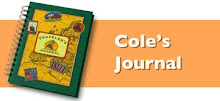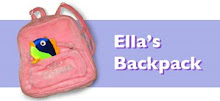
Next we made the short journey to Chambery, a town we picked based on le Tour de France route. Our first day in town we planned to head out on the course to catch part of stage 9. Then on day two, stage 10 would take off right next door to our hotel. Trying to get information about the route and road closures was no easy task, so we made our best guess with the info we had and headed out. On day one we decided on Albertville, host city of the 1992 Winter Olympics. This would be about the midway point for the riders on the hardest mountain stage in the Alps. The twisty stage starts in Morzine and takes them 127 miles over four large mountain passes. Instead of joining the masses in the city, we took the car and followed the route just north of town into the countryside. We knew we had the right route as policemen lined the road waiting for their orders to shut it down. We found a nice spot to pull off and enjoyed about 50 yards of real estate all to ourselves. The first traffic to pass by was the “caravan” of sponsor vehicles. It was a great surprise for the kids as they exclaimed, “This is better than a parade!”. Literally hundreds of decorated cars and trucks go flying by on the twisty mountain road, all throwing goodies with their logo. We got hats, magnets, newspapers, laundry detergent, bandanas, keychains, candy, and even a few sausages. The position of each vehicle in the caravan is logged by GPS from an aircraft and kept on a strict schedule. I read that the caravan stretches over 25km and takes almost an hour to pass by. It’s estimated that over the course of the tour, some 12 million items are thrown to the crowd.
Finally, over an hour after the caravan, you hear the helicopters getting closer and closer. Next thing you know the racers appear in the distance. Standing in one little spot of their 2,200 mile journey makes it a little hard to fully appreciate, but you certainly get caught up in the excitement. As fans around us yelled the racers' names we just followed their lead. The overall planning for this event is was what really amazed me. On TV you watch the lead couple of racers pedaling away, but until you see it in person you have no idea as to the amount of support vehicles and personnel that are part of the action. In trying to compare it to something in the States, I thought about an event like the Indy 500. The Indy 500 has an attendance of about 300,000 whereas the Tour draws well into the millions. Now imagine taking every Indy race car team, equipment and equipment personnel, media personnel (including photographers), TV crews, race officials, scorers, massive amounts of security, medical and safety crews, all the merchandise and salespeople, concessions, staging equipment (for all the start and finish areas plus the winner podiums), hospitality for VIP’s, the sponsors and their vehicles, etc., and make everything and everyone I just mentioned mobile. Then go like crazy from town to town for almost a month, setting up every morning and evening in a new town, all while reporting back to the world. On top of that, they use different towns every year, so you must understand the logistics of each town you arrive in with regards to the layout, police control, barricades, traffic closures, media and hospitality villages, and on and on. Don’t forget to find places for everyone to sleep and get fed. The way they effortlessly move thousands of people and vehicles in such an organized fashion is simply amazing.




















